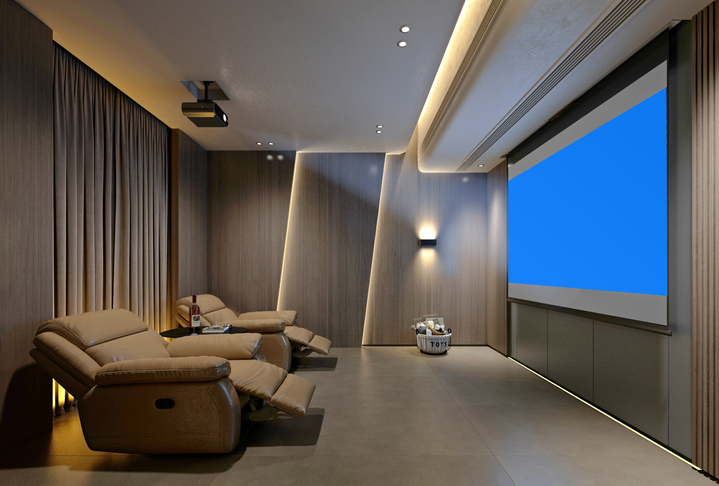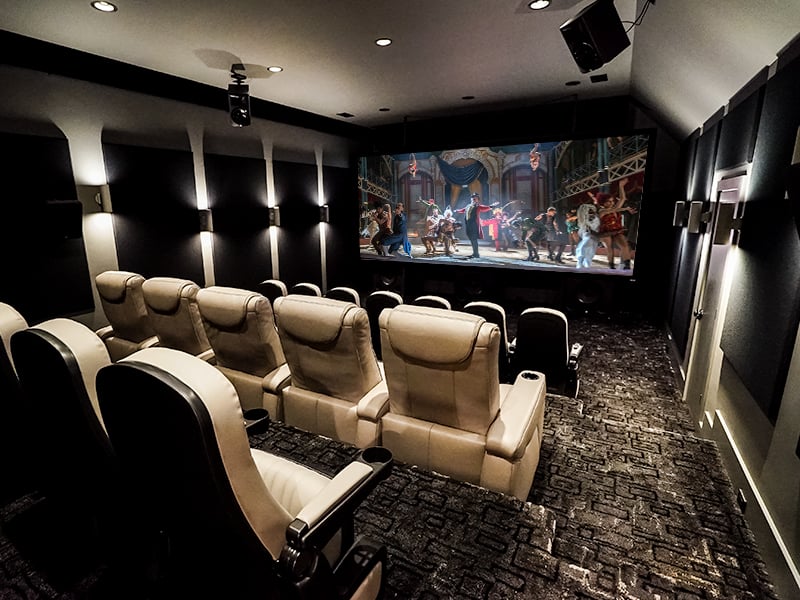Home Theater Tampa: Bringing Theater-like Experiences Into Your Home
Home Theater Tampa: Bringing Theater-like Experiences Into Your Home
Blog Article
Home Theater 101: Every Little Thing You Required to Know for a Cinematic Experience in the house
Creating a home movie theater that matches the motion picture experience of a business theater involves mindful factor to consider of numerous components, consisting of screen choice, audio systems, and room layout. Each element plays a crucial duty in attaining the wanted ambiance and capability. Whether you are contemplating the ideal screen size or the intricacies of border sound, understanding these principles is essential. As we discover these important parts, it comes to be obvious that the choices made can substantially influence your general watching experience, leaving one to contemplate exactly how these decisions will form your individual cinema.
Selecting the Right Screen
When establishing a home theater, picking the right display can make or break the seeing experience - home theater design tampa. The screen acts as the centerpiece of your setup, influencing photo top quality, watching angles, and general visual. Secret variables to take into consideration include screen dimension, type, and resolution
First, figure out the appropriate display size based on your space measurements and seating distance. Next, select between different display types, such as fixed-frame, mechanized, or retractable screens, each offering unique benefits.
Resolution is one more critical element. For an absolutely immersive experience, consider a display made for 4K or even 8K material, guaranteeing sharpness and clearness. Furthermore, think about the display's gain, which affects brightness and comparison; a greater gain can enhance brightness in well-lit spaces, while a lower gain might be much more appropriate for darker environments.
Choosing Audio Equipment
Audio devices is an important part of any kind of home cinema system, substantially enhancing the overall viewing experience. The selection of audio gear can determine the depth, clarity, and immersion of noise, essential for producing a cinematic environment.
When selecting audio tools, take into consideration a border stereo, which commonly consists of a receiver, numerous audio speakers, and a speaker. A 5.1 or 7.1 network system is advised, where the initial number stands for the audio speakers and the second the speaker, providing an immersive soundscape. The receiver is the heart of the system, managing sound and video clip signals, and ought to support modern layouts like Dolby Atmos for a boosted spatial experience.
Quality audio speakers are essential; seek versions that supply a balanced audio account with great bass reaction. Floor-standing speakers can produce richer audio, while shelf alternatives save area. Additionally, consider wireless alternatives for simplicity of installation, although wired systems commonly deliver superior efficiency.

Optimal Seating Plans
Developing an excellent home cinema experience pivots significantly on optimal seating arrangements. The arrangement of seats plays a crucial function in both comfort and viewing quality, straight impacting the overall motion picture experience.
First, think about the screen size and viewing range. A typical guideline is to place seats at a distance roughly 1.5 to 2.5 times the diagonal dimension of the display. This makes sure an immersive experience without straining the eyes.
Next, altitude is essential. The back rows must be higher than the front to avoid obstructions if your seating is in a tiered style. For level seating, guarantee that the front row is not too near the screen, and that everybody has a clear view.
Furthermore, think about the setup in regards to social characteristics. Team seating can improve the communal experience, while click this site private seats may be preferred for individual viewing.

Finally, prioritize convenience with ergonomic seats that supports prolonged viewing periods. Including recliner chairs or cushioned seats can substantially enhance the experience, making the home movie theater a recommended location for both enjoyment and relaxation.
Lighting and Atmosphere
Reliable lighting and atmosphere are important elements of a properly designed home movie theater, as they considerably affect the watching experience. The right illumination can improve the cinematic feeling, while inadequate choices can take away from it. For ideal results, consider a split lighting method that includes ambient, task, and accent lights.
Ambient lighting offers general illumination, making sure that the room is not completely dark, which can strain the eyes. Dimmer switches are very recommended, enabling modifications based upon the web content being watched. Task lighting, such as wall sconces or flooring lamps, offers practical illumination for tasks like reading or navigating the area without interfering with the total ambience.
Accent lights can be utilized to highlight building attributes or develop prime focus, adding depth and passion to the area. LED strip lights behind displays or along racks can provide a subtle glow that improves the visual experience without overwhelming the audience.

Wiring and Installation Tips
A well-planned circuitry setup is essential for achieving optimal performance in your house cinema system. Proper circuitry not only makes certain high-grade sound and video signals but also boosts the general aesthetic of your space. Begin by drawing up your format, recognizing where each element will certainly be positioned, including your display, audio speakers, and receiver.
When choosing cables, focus on high-quality, appropriately determined electrical wiring to decrease signal loss. HDMI cables ought to be used for video site clip connections, while audio speaker cable should match the specifications of your audio speakers and amplifier. Go with in-wall ranked cords to adhere to safety criteria and maintain a tidy look.

Final Thought
In recap, creating an extraordinary home movie theater experience needs careful consideration of different components, including display choice, audio tools, seating plans, lighting, and circuitry. Each component plays a critical role in attaining optimum efficiency and ambiance, eventually improving the enjoyment of home enjoyment. By prioritizing these factors, a cinematic ambience can be efficiently replicated, enabling for immersive viewing experiences that equal typical movie theater setups. Interest to information in each location is essential for general contentment.
Developing a home theater that measures up to the motion picture experience of a commercial theatre includes mindful factor to consider of multiple parts, tampa home theater consisting of screen option, sound systems, and room layout.When setting up a home theater, selecting the right display can make or break the watching experience. Next off, choose in between various screen types, such as fixed-frame, motorized, or retractable displays, each offering unique advantages. For a really immersive experience, consider a screen created for 4K or also 8K material, making sure sharpness and clarity.In summary, creating an extraordinary home theater experience needs careful factor to consider of numerous components, consisting of screen choice, audio tools, seating setups, lighting, and wiring.
Report this page